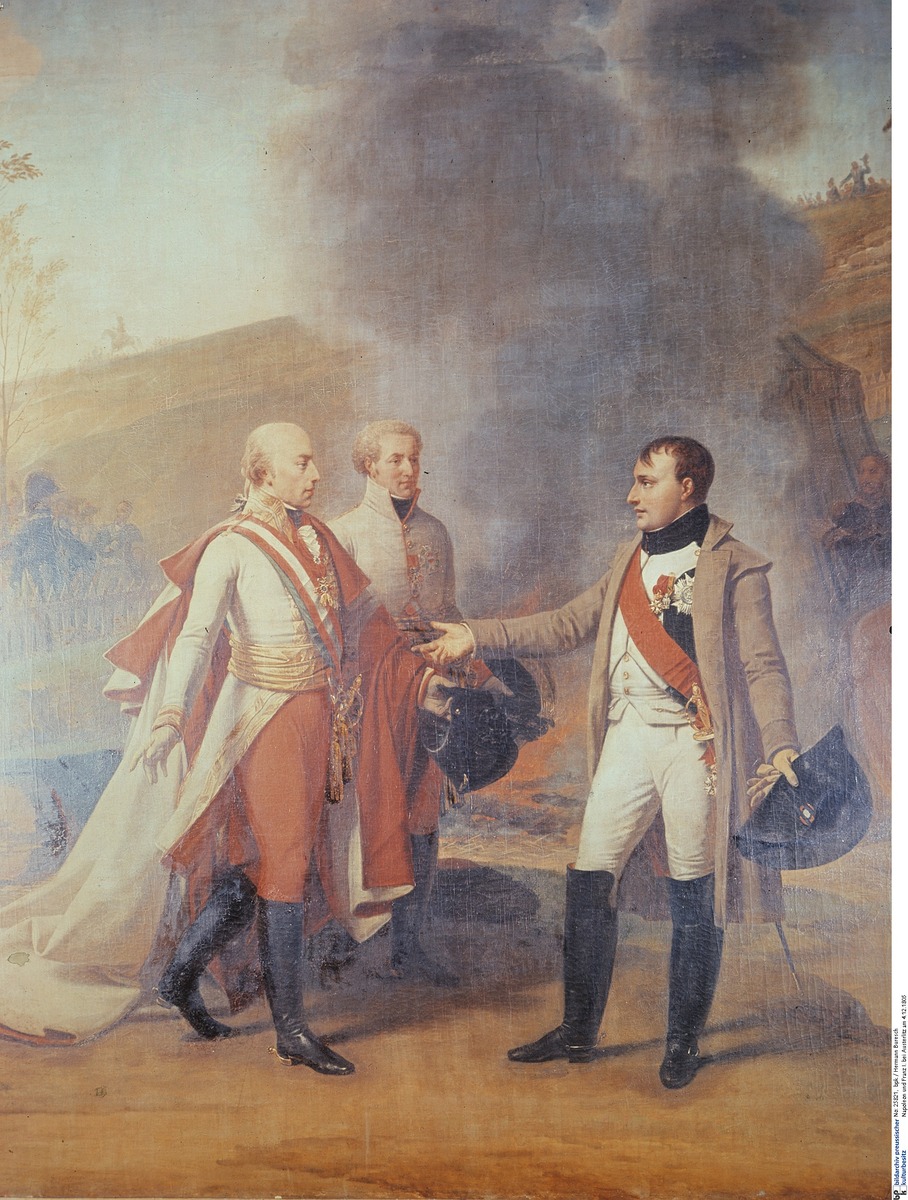Abstract
In the early years of the nineteenth century, French troops under
Napoleon Bonaparte swept across continental Europe in a series of
military victories. In the Battle of the Three Emperors at Austerlitz
(in today’s Czech Republic) on December 2, 1805, Napoleon defeated a
combined Russian-Austrian army led by Holy Roman Emperor Francis II and
Russian Czar Alexander I. The image shows a meeting between Napoleon
(right) and Francis II two days after the battle. At the time, the
fortunes of Francis II (who, in founding the Austrian Empire the
previous year, had become Francis I of Austria) were in decline. He had
already suffered serious territorial losses and would eventually
acquiesce to the dissolution of the Holy Roman Empire the following
year, in 1806. For Napoleon, however, Austerlitz marked the beginning of
a five-year period of military and political hegemony in Germany. The
painter Antoine Jean Gros, who painted this scene, was commissioned by
Napoleon to paint battle scenes from his various campaigns and rose to
become one of the most highly prized and honored painters of the
Napoleonic era.
